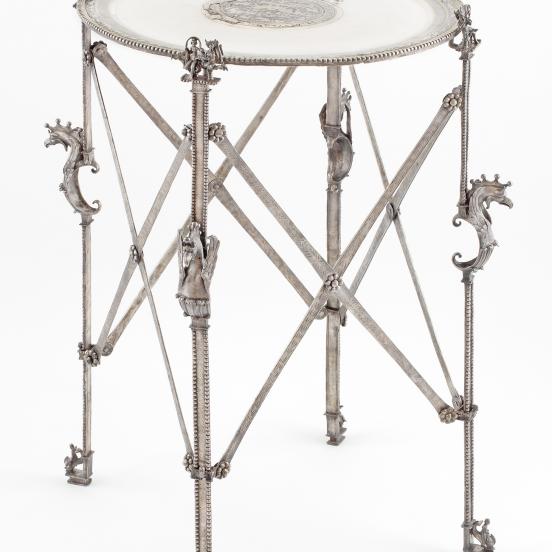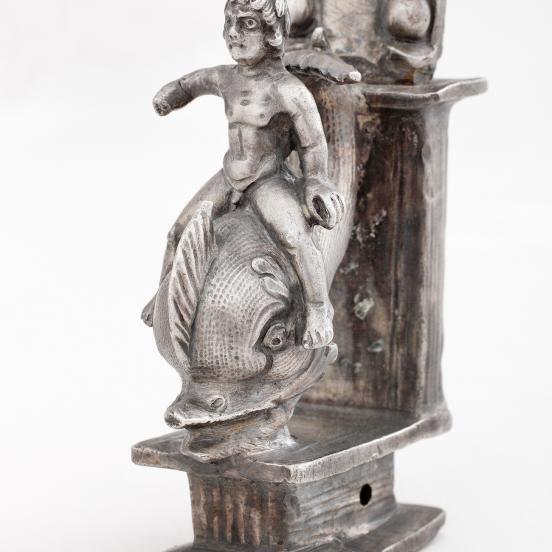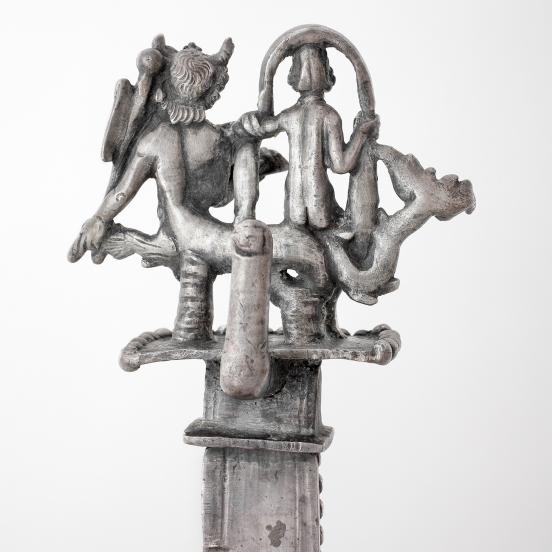The Kőszárhegy quadripus
The unique silver stand, whose fragments were discovered in 1878 near the Borbély cellar on Kőszárhegy by Polgárdi, north-east of Lake Balaton, has several connections with the prominent objects of the Seuso treasure. When it was first restored a three-legged stand (tripus) was compiled from the discovered pieces. However, in 2002 it turned out that the existing two legs and the three full transverse pieces, together with half of one, were in fact parts of a four-legged folding stand (quadripus). Thus the stand could have originally weighed some 20 kilograms. Up to the present, it is the only known late Roman silver stand and also its ornamentation make it outstanding among similar finds. The finials of the legs of the quadripus are decorated with Nereids (daughters of the sea god Nereus) sitting on the backs of Tritons, while the middle parts are ornamented with sea gryphon heads. The bases of the legs are decorated with figures of the child Eros riding on dolphins. The edges of the legs are beaded, and motifs of leafs can be seen on their surface. The quadripus was originally made for holding washbowls, yet serving platters of different sizes could also be placed on them; such a stand with an adjustable span was usually part of magnificent banqueting sets similar to the Seuso treasure.




